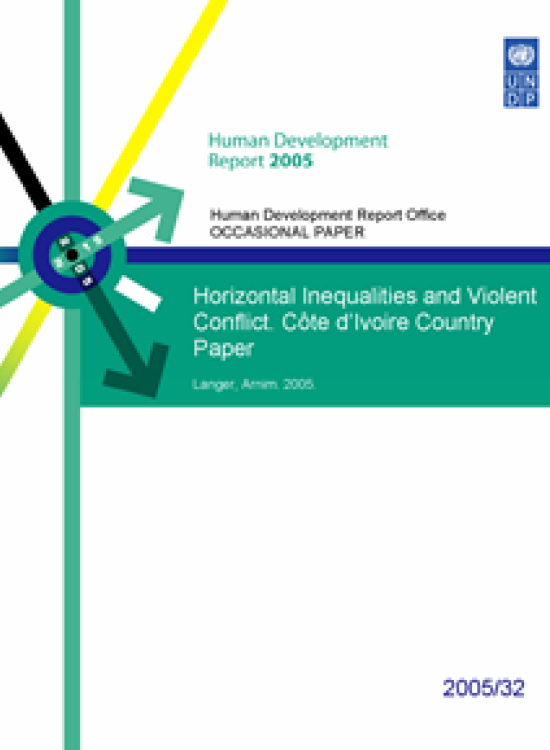Horizontal Inequalities and Violent Conflict
Côte d’Ivoire Country Paper

Download Report by Language
Document
hdr2005langerarnim32.pdf
(227.29 KB)
Citation
Langer, Amin. 2005. Horizontal Inequalities and Violent Conflict: Côte d’Ivoire Country Paper. New York.
Horizontal Inequalities and Violent Conflict
Côte d’Ivoire Country Paper
Posted on: January 01, 2005
The question why some countries are able to maintain stable and inclusive multiethnic societies while others, including countries which have been relatively stable for decades such as Côte d’Ivoire, experience wide-scale violence along ethnic lines remains, undoubtedly, among the most important questions to be researched at the beginning of the twenty-first century. In order to explain the emergence of ethnic violence and disintegration of multi-ethnic states, scholars from different disciplines have focused on different factors and proposed different conflict narratives or models. One of the most influential narratives used to explain and analyze the emergence of violent group mobilization and violent conflict is the ‘theory of relative deprivation.’ Ted Gurr has developed this theory most fully in his well-known book Why Men Rebel (Gurr, 1970). The theory’s main claim is that grievance-induced discontent is the main determinant for (violent) political mobilization. In recent years, Frances Stewart has re-developed this argument (see Stewart, 2000 and 2002). More particularly, she asserts that where there are social, economic and political inequalities, ‘coinciding with cultural differences, culture could become a powerful mobilising agent that can lead to a range of political disturbances,’ including violent conflict and civil war (Stewart, 2002: 3). She refers to the inequalities between culturally defined groups as horizontal inequalities, and differentiates this kind of inequality from the ‘normal’ definition of inequality (Ibid.). She labels the latter type of inequality as vertical inequality because it ‘lines individuals or households up vertically and measures inequality over the range of individuals’ (Ibid).

